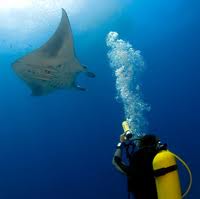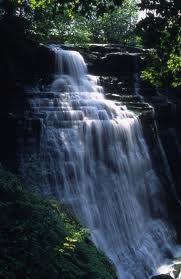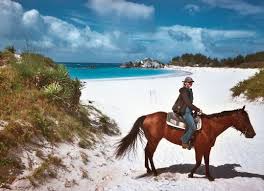 The Turks & Caicos are an archipelago of eight islands and forty relatively flat limestone and coral cays, some of which are little more than dusty specks in the aquamarine waters. The relative anonymity of these islands stem from their location. They are south of the Bahamas, yet not part of the Bahamas; north of the Caribbean, yet not technically part of the Caribbean. Indeed, the Turks & Caicos are a British Crown Colony whose 15,000 inhabitants or Belongers, as locals like to call themselves, slip through the pages of most guidebooks. This is especially true of Grand Turk, a sleepy 6-mile long island where you stroll past the Victorian homes on Front Street in a matter of minutes. Nestled amongst the homes are a handful of inconspicuous hotels, restaurants, dive shops, and government offices that seem to add to the British charm.
The Turks & Caicos are an archipelago of eight islands and forty relatively flat limestone and coral cays, some of which are little more than dusty specks in the aquamarine waters. The relative anonymity of these islands stem from their location. They are south of the Bahamas, yet not part of the Bahamas; north of the Caribbean, yet not technically part of the Caribbean. Indeed, the Turks & Caicos are a British Crown Colony whose 15,000 inhabitants or Belongers, as locals like to call themselves, slip through the pages of most guidebooks. This is especially true of Grand Turk, a sleepy 6-mile long island where you stroll past the Victorian homes on Front Street in a matter of minutes. Nestled amongst the homes are a handful of inconspicuous hotels, restaurants, dive shops, and government offices that seem to add to the British charm.
Underwater, Grand Turk is home to the Wall, where without warning the reef plummets to a mind-boggling 7,000 feet to mark the edge of the Turks Island Passage. On the rim of this great blue abyss, it’s not uncommon to see humpback whales migrating in winter, hawksbill and loggerhead turtles swimming gracefully, and herds of spotted eagle rays, with wingspans upward of eight feet, their thick black tails churning behind. Researching a scuba diving story for Islands magazine, I was 45 feet below the surface with excellent light and visibility, when suddenly it turned to darkness. I looked up and spotted six massive eagle rays swimming above me, one of the highlights of my scuba diving life.

 Nestled between Akron and Cleveland along a 22-mile corridor of the Cuyahoga River is one of America’s newest national parks,
Nestled between Akron and Cleveland along a 22-mile corridor of the Cuyahoga River is one of America’s newest national parks,  The Turks & Caicos are an archipelago of eight islands and forty relatively flat limestone and coral cays, some of which are little more than dusty specks in the aquamarine waters. The relative anonymity of these islands stem from their location. They are south of the Bahamas, yet not part of the Bahamas; north of the Caribbean, yet not technically part of the Caribbean. Indeed, the Turks & Caicos are a British Crown Colony whose 15,000 inhabitants or Belongers, as locals like to call themselves, slip through the pages of most guidebooks. This is especially true of Grand Turk, a sleepy 6-mile long island where you stroll past the Victorian homes on Front Street in a matter of minutes. Nestled amongst the homes are a handful of inconspicuous hotels, restaurants, dive shops, and government offices that seem to add to the British charm.
The Turks & Caicos are an archipelago of eight islands and forty relatively flat limestone and coral cays, some of which are little more than dusty specks in the aquamarine waters. The relative anonymity of these islands stem from their location. They are south of the Bahamas, yet not part of the Bahamas; north of the Caribbean, yet not technically part of the Caribbean. Indeed, the Turks & Caicos are a British Crown Colony whose 15,000 inhabitants or Belongers, as locals like to call themselves, slip through the pages of most guidebooks. This is especially true of Grand Turk, a sleepy 6-mile long island where you stroll past the Victorian homes on Front Street in a matter of minutes. Nestled amongst the homes are a handful of inconspicuous hotels, restaurants, dive shops, and government offices that seem to add to the British charm.  If you want to visit New York at a discount, then head to the city during their
If you want to visit New York at a discount, then head to the city during their  Besides being on call when mishaps happen and earning the chance to win free hotel stays, another integral part of an ActiveTravels membership is our monthly newsletter. These stories are not the usual travel fluff you see in magazines. They’re first-hand insightful commentary curated from over 20 years of being a travel writer. Or a topical news peg like an intriguing new resort that comes across our desk. Since we started ActiveTravels, we have been churning out these monthly newsletters hoping to inspire your travels. One of our long-term goals was to categorize each of our headings, so you can have this library of information at your fingertips. We’re happy to report that it’s now available on our website. Simply type in your password and you’ll find more than 15 Quick Escapes, ideal for a weekend getaway. Or check out our main feature, “News from the Road,” which tackles one region at a time, like the Greek Isles, Kenya, French Polynesia, or the Canadian Rockies.
Besides being on call when mishaps happen and earning the chance to win free hotel stays, another integral part of an ActiveTravels membership is our monthly newsletter. These stories are not the usual travel fluff you see in magazines. They’re first-hand insightful commentary curated from over 20 years of being a travel writer. Or a topical news peg like an intriguing new resort that comes across our desk. Since we started ActiveTravels, we have been churning out these monthly newsletters hoping to inspire your travels. One of our long-term goals was to categorize each of our headings, so you can have this library of information at your fingertips. We’re happy to report that it’s now available on our website. Simply type in your password and you’ll find more than 15 Quick Escapes, ideal for a weekend getaway. Or check out our main feature, “News from the Road,” which tackles one region at a time, like the Greek Isles, Kenya, French Polynesia, or the Canadian Rockies.  With a fantastic network of trail and huts, and a long history and appreciation of running, Switzerland is a trail runner’s dream. Mountain runners have been weaving their way along alp paths for decades, and are practically exalted here. Few people know these trails better than Doug Mayer, founder of Run the Alps. Mayer wrote me last week, claiming he has
With a fantastic network of trail and huts, and a long history and appreciation of running, Switzerland is a trail runner’s dream. Mountain runners have been weaving their way along alp paths for decades, and are practically exalted here. Few people know these trails better than Doug Mayer, founder of Run the Alps. Mayer wrote me last week, claiming he has  If Arizona is on your radar this coming year, consider the new
If Arizona is on your radar this coming year, consider the new